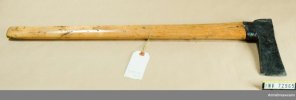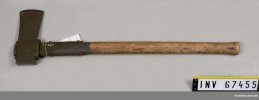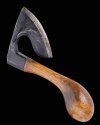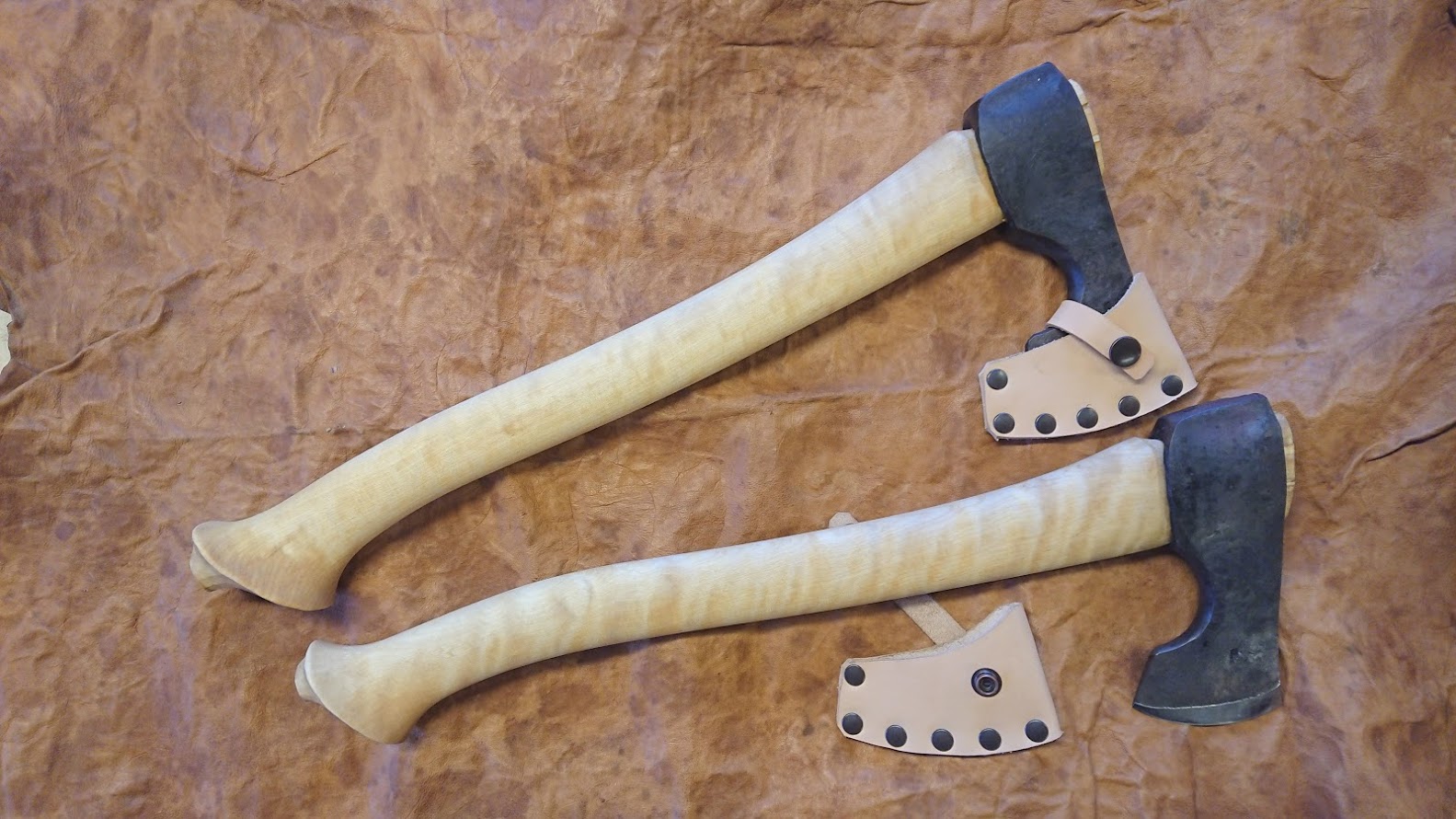- Joined
- Jun 1, 2017
- Messages
- 241
Need I say more? I'm having a hard time finding a centralized resource describing and evaluating pros/cons of knob choices on axe handles with the historical changes over time. I think there's a cultural (at least regional) aspect of this as well that goes beyond bit (single v double), function and price in production.
I wonder if the knob style and handle type (straight v curved) needs to have as strong a relationship as is seems.
So, we all know that 'pics sell' on the forum, so some (very limited) examples to start the conversation below.
I wish Steve Tall was still active here to learn us all on this topic...
These are from the 40's, single bit curved handles, standard for the time I think.

standard modern single curved handle. Lots of meat left for customizing (House Handles).

standard modern straight double handle (House Handles) again.

random chaos, surprisingly homogeneous (OK, lots of House Handles).

So, please pile on the knowledge! I have a handle coming that I will share that spurred many of my questions (old company, new-ish stamp, old school shape...guesses will be entertained) as well as Lane's new video (about time) talking about knobs on Russian axes. What do we know? What are your experiences? What did I miss? Thanks for any and all insight!
I wonder if the knob style and handle type (straight v curved) needs to have as strong a relationship as is seems.
So, we all know that 'pics sell' on the forum, so some (very limited) examples to start the conversation below.
I wish Steve Tall was still active here to learn us all on this topic...
These are from the 40's, single bit curved handles, standard for the time I think.

standard modern single curved handle. Lots of meat left for customizing (House Handles).

standard modern straight double handle (House Handles) again.

random chaos, surprisingly homogeneous (OK, lots of House Handles).

So, please pile on the knowledge! I have a handle coming that I will share that spurred many of my questions (old company, new-ish stamp, old school shape...guesses will be entertained) as well as Lane's new video (about time) talking about knobs on Russian axes. What do we know? What are your experiences? What did I miss? Thanks for any and all insight!
Last edited:




